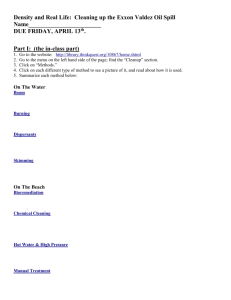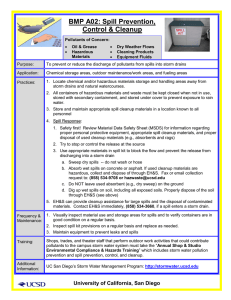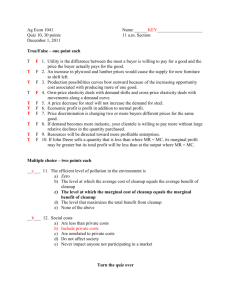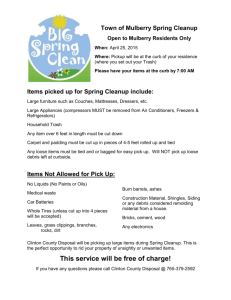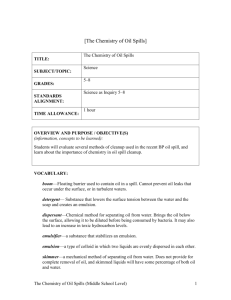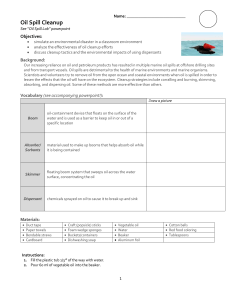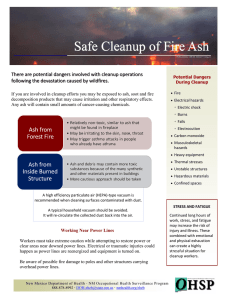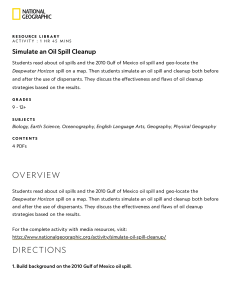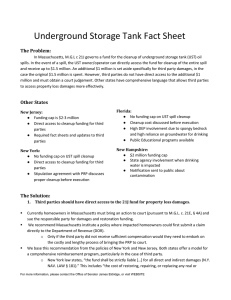Document 11002173
advertisement
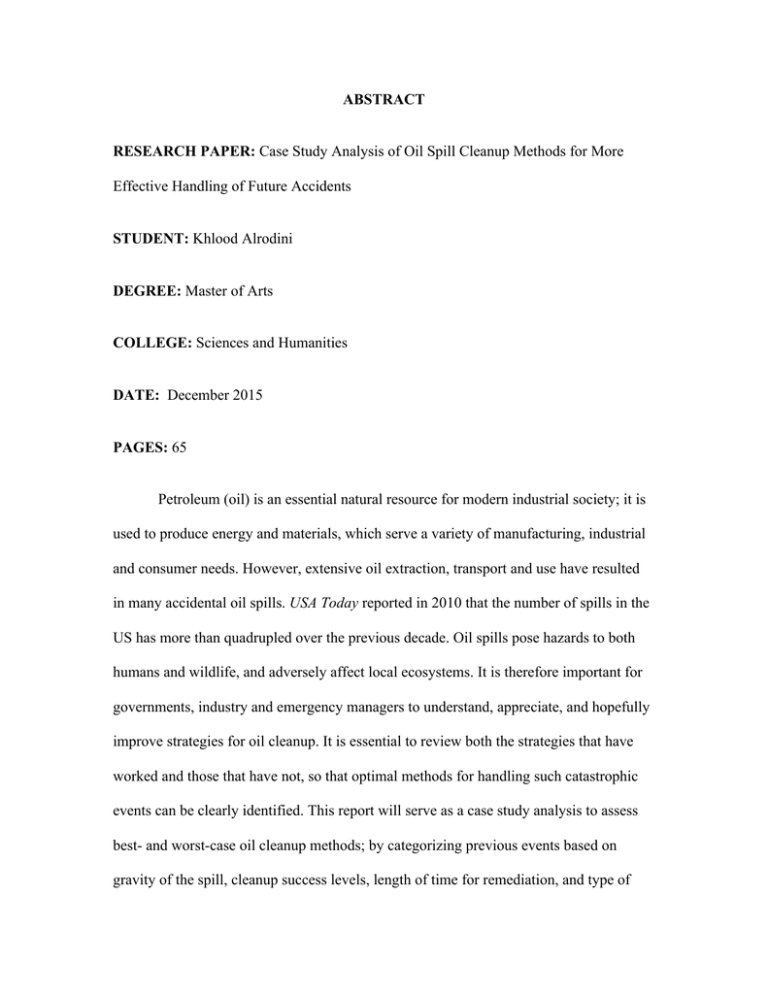
ABSTRACT RESEARCH PAPER: Case Study Analysis of Oil Spill Cleanup Methods for More Effective Handling of Future Accidents STUDENT: Khlood Alrodini DEGREE: Master of Arts COLLEGE: Sciences and Humanities DATE: December 2015 PAGES: 65 Petroleum (oil) is an essential natural resource for modern industrial society; it is used to produce energy and materials, which serve a variety of manufacturing, industrial and consumer needs. However, extensive oil extraction, transport and use have resulted in many accidental oil spills. USA Today reported in 2010 that the number of spills in the US has more than quadrupled over the previous decade. Oil spills pose hazards to both humans and wildlife, and adversely affect local ecosystems. It is therefore important for governments, industry and emergency managers to understand, appreciate, and hopefully improve strategies for oil cleanup. It is essential to review both the strategies that have worked and those that have not, so that optimal methods for handling such catastrophic events can be clearly identified. This report will serve as a case study analysis to assess best- and worst-case oil cleanup methods; by categorizing previous events based on gravity of the spill, cleanup success levels, length of time for remediation, and type of affected environment, more effective strategies can be developed for evaluating and managing cleanup efforts. This includes more rapid oil spill cleanup with minimal impact on the local environment. The case studies reveal that human error is the single most important factor correlating with risk of oil spills; therefore, more effort should be spent towards prevention than on the development of new technologies for cleanup response. However, when the inevitable oil spill occurs, bioremediation and dispersant application are concluded to be the preferred methods. Keywords: petroleum, toxicity, environmental damage, biodegradation, recovery

